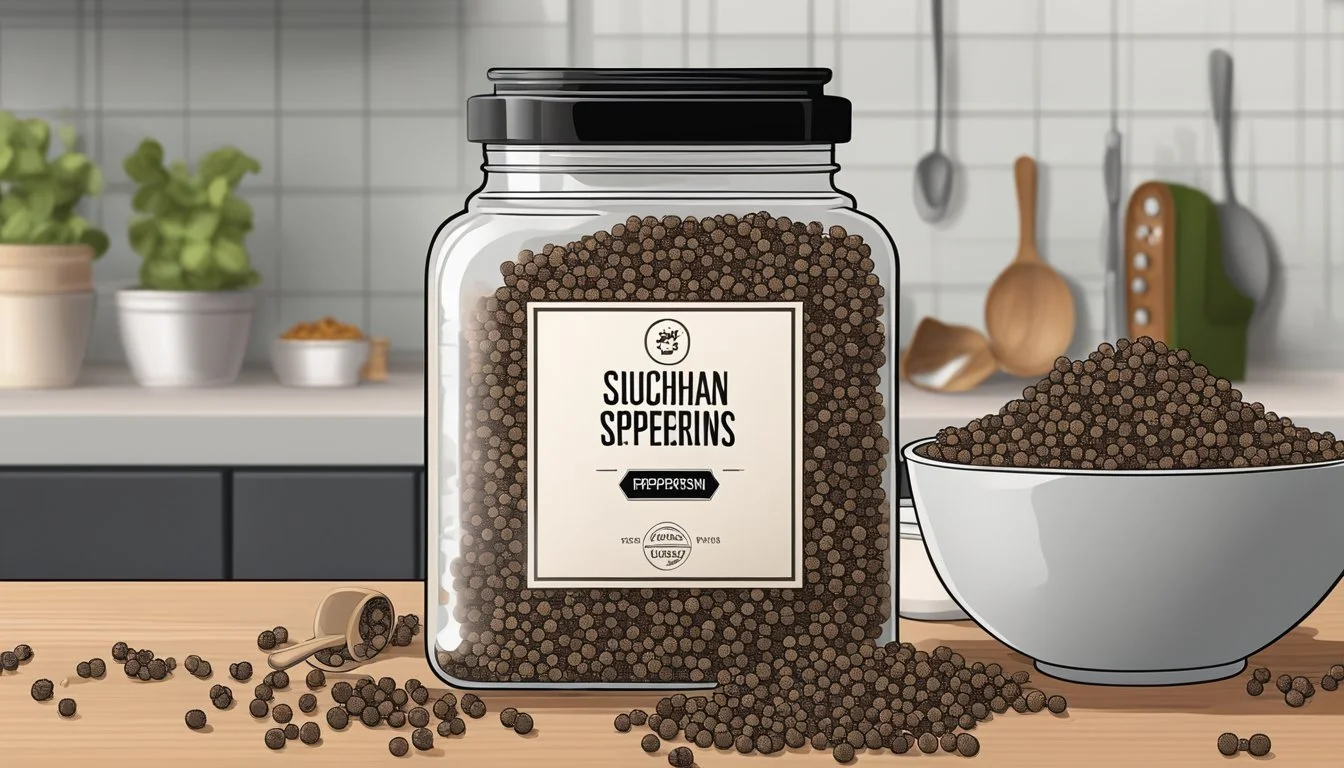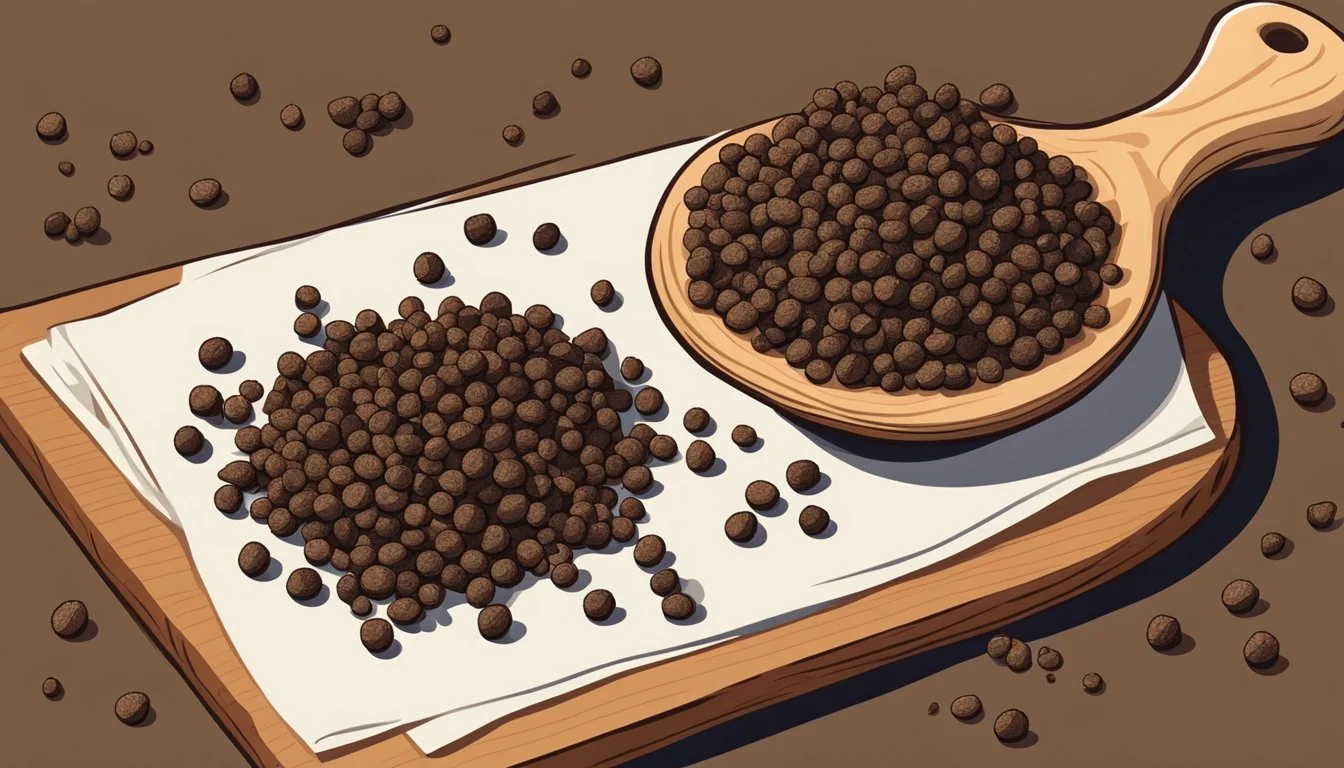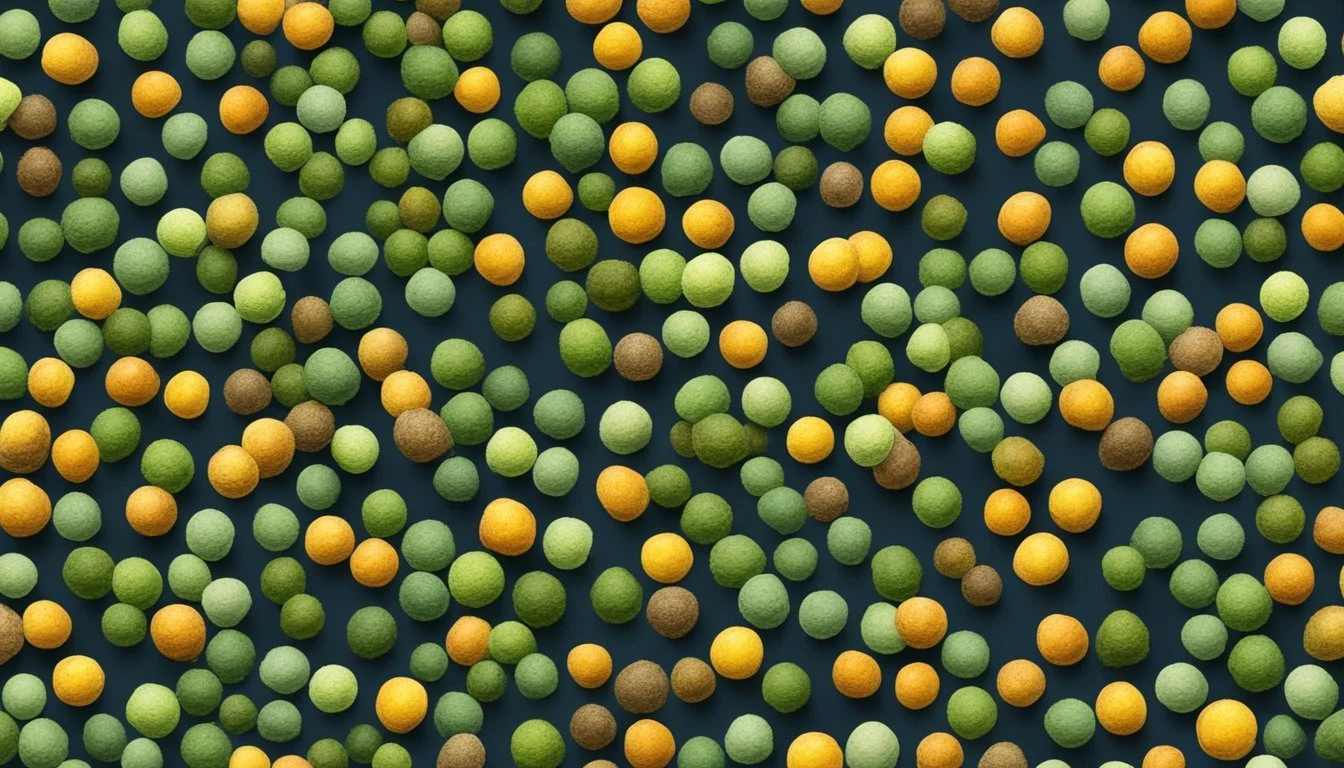Does Sichuan Peppercorns Go Bad?
Storage Tips and Shelf Life
Sichuan peppercorns are a key ingredient in many Chinese dishes, providing a distinctive numbing sensation and a unique flavor that can't be replicated. While Sichuan peppercorns do not go bad in the traditional sense, they can lose their potency over time. Proper storage is essential to maintain their quality, flavor, and aroma.
When stored correctly in a cool, dry place, away from moisture, Sichuan peppercorns can remain effective for an extended period. This ensures that their characteristic qualities, such as the numbing sensation and vibrant flavor, are preserved. The freshness of the spice directly impacts the authenticity of Sichuan cuisine, making it crucial for those who value traditional Chinese cooking to keep their peppercorns in prime condition.
For culinary enthusiasts and home chefs alike, understanding the storage and longevity of Sichuan peppercorns not only enhances their cooking experience but also respects the rich history and distinctiveness of Sichuan cuisine. Maintaining the quality of these peppercorns ensures that each dish prepared delivers the intended punch of flavor, making it a worthwhile practice for anyone serious about their spices.
Overview of Sichuan Peppercorns
Sichuan peppercorns are an integral component of Sichuan cuisine, known for their unique numbing effect and complex flavor profile. Native to the Sichuan province in southwestern China, these peppercorns are essential in many traditional dishes like mapo tofu and dan dan noodles.
Origin and Botanical Background
Sichuan peppercorns come from the dried husks of the prickly ash tree, which belongs to the genus Zanthoxylum. Despite their name, they are not related to black pepper or chili peppers. Known locally as huā jiāo (花椒), these spice berries have been used in China for centuries, not only for cooking but also for their applications in traditional Chinese medicine. The prickly ash tree is well adapted to the climate of the Sichuan province, which contributes to the unique characteristics of the peppercorns. The term má is often used to describe the numbing sensation they produce, which is a hallmark of their effect on the palate.
Culinary Uses and Sensory Experience
In Sichuan cooking, Sichuan peppercorns are paired with spicy Chinese chilies to create the iconic mala (麻辣) flavor, which means "numbing and spicy." This combination is central to dishes like mapo tofu and dan dan noodles, where the peppercorns' numbing effect balances the heat of the chilies. The peppercorns impart a citrusy, floral, and earthy taste, making them unique among spices. Beyond traditional recipes, they are also used to flavor sauces, marinades, and even sweets. Their complex flavor profile and numbing sensation add depth and dimension to many dishes, making them indispensable in the culinary world.
Health and Quality Indicators
Health benefits and quality signs are key to understanding Sichuan peppercorns. Evaluating their nutritional value, medicinal properties, and markers of freshness and potency ensures optimal use.
Nutritional Benefits and Medicinal Properties
Sichuan peppercorns offer unique health benefits. They are known for their hydroxy-alpha sanshool content, which provides the distinct mouth-tingling sensation.
Rich in antioxidants, they may help reduce inflammation and protect cells from damage. Lab studies suggest potential cytotoxic and genotoxic effects from certain species, indicating both benefits and risks.
Historically, they have been used in traditional medicine to stimulate digestion and alleviate abdominal pain. Their aroma and active compounds support various therapeutic applications, from enhancing circulation to acting as a natural insect repellent.
Identifying Freshness and Potency
Ensuring the freshness and potency of Sichuan peppercorns is crucial. Fresh peppercorns exhibit a vibrant red-brown color and a strong, citrusy aroma. Their potency can diminish if not stored properly.
Storage tips:
Cool, dark place: Keep them away from heat and direct sunlight.
Airtight containers: Prevent moisture exposure.
Well-stored peppercorns maintain optimal flavor and numbing effect for up to a year. Beyond this period, they may lose their intensity, though they don't spoil outright. Regularly check for fading color and weakened scent to gauge freshness.
Shelf Life and Storage Conditions
Sichuan peppercorns, also known as dried prickly ash, can maintain their potency and flavor for a significant period when stored correctly. Proper storage techniques are crucial to preserving their spicy, numbing qualities.
Proper Storage Techniques
To maximize the shelf life of Sichuan peppercorns, keep them in an airtight container. This prevents exposure to humidity, which can degrade their quality. Use glass jars with tight seals or vacuum-sealed bags for optimal results.
Store the containers in a cool, dark place, away from heat and direct sunlight. Excessive light and heat can cause the peppercorns to lose their unique flavors more quickly.
It's essential to avoid high humidity environments. Moisture can lead to mold growth and spoilage. A cupboard or pantry that's dark and cool is ideal for maintaining the integrity of the peppercorns.
By following these storage techniques, Sichuan peppercorns can retain their quality for up to a year. However, for the most intense flavors, it is best to use them within the first few months after purchase.
Signs of Spoilage and Degradation
To determine if Sichuan peppercorns are past their prime, several visual and olfactory indicators can help. Monitoring these signs ensures the peppercorns maintain their quality, flavor, and distinctive numbing effect.
Visual and Olfactory Clues
Visual Clues:
Mold or Discoloration: Peppered with black or white spots indicates mold growth.
Brittle Appearance: Fresh peppercorns are slightly pliable; overly brittle ones may be too old.
Loss of Color: Faded or dull peppercorns might have lost some of their potency.
Olfactory Clues:
Smell: Fresh Sichuan peppercorns have a distinct, vibrant aroma. A lack of scent suggests deterioration.
Stale Odor: Any musty or off-putting smell signals spoilage.
Identifying these clues helps in maintaining the spice's desired qualities and avoiding compromised batches.
Culinary Applications and Pairings
Sichuan peppercorns, known for their numbing and citrusy notes, are integral to various cuisines, particularly in Sichuan Province. They elevate both traditional and modern recipes, pairing exceptionally well with meats and other foods.
Traditional and Modern Recipes
In traditional Sichuan cuisine, Sichuan peppercorns are a staple in dishes like mapo tofu and Sichuan beef. These peppercorns are often combined with spicy chilies to create the mala flavor (numbing-spicy).
Stir-fries benefit greatly from the inclusion of Sichuan peppercorns. When added early in the cooking process, they infuse the oil with their distinct flavor, which enhances the entire dish.
Modern recipes have also embraced Sichuan peppercorns. Chefs around the world are now incorporating them into non-traditional dishes, adding a unique twist to salads, marinades, and even desserts.
Pairing with Meats and Other Foods
Sichuan peppercorns pair exceptionally well with various meats, particularly in recipes such as Sichuan beef and dishes involving offal. The numbing effect of the peppercorns balances the richness of meats, creating a well-rounded flavor profile.
When used as a seasoning, they enhance the taste of roasted or grilled meats, especially when combined with other spices like five-spice powder. This combination adds a layer of complexity to the dish.
For vegetarians, Sichuan peppercorns can elevate dishes like mapo tofu, making them more flavorful and aromatic. They are also a great addition to seasonal vegetables, providing a unique taste that complements rather than overpowers.
Buying and Sourcing Tips
When purchasing Sichuan peppercorns, it is crucial to select high-quality peppers and understand the different varieties available. Awareness of these factors can greatly enhance the cooking experience and the flavors in dishes.
Selecting the Best Quality
To ensure purchasing the best quality Sichuan peppercorns, look for those that are fresh and aromatic. Freshness can be judged by smelling the peppercorns; they should have a strong, distinctive fragrance. Avoid any that appear moldy or have a weak aroma.
Visual inspection is also important. High-quality Sichuan peppercorns should be vibrant in color, whether red or green, and free from seeds and stems. Buying from reputable sources like mala market, Asian grocery stores, or specialty spice shops can help ensure better quality.
Online platforms, such as Amazon and international markets, offer convenience but also warrant vigilance. Check reviews and product descriptions carefully to ensure quality.
Understanding the Varieties
Sichuan peppercorns come in two main varieties: red and green. Red Sichuan peppercorns are more commonly used and have a warm, slightly lemony flavor with a hint of floral notes, while green Sichuan peppercorns are known for their sharper, more intense citrus and earthy flavors.
The choice between red and green varieties often depends on the specific dish being prepared, as each imparts a unique flavor profile. For instance, green Sichuan peppercorns are often preferred in fish and lighter dishes, whereas red is widely used in robust dishes to create the characteristic ma la (numbing and spicy) effect.
Familiarity with these varieties and their distinct properties allows for better culinary experimentation and more authentic Asian cuisine experiences.
Handling and Preparation
Proper handling and preparation of Sichuan peppercorns are crucial to harnessing their full flavor and unique numbing effect. Ensuring accurate toasting and grinding techniques, paired with appropriate dosage, will maximize their culinary potential.
Toasting and Grinding Techniques
Toasting Sichuan peppercorns enhances their flavor and aroma. Begin by heating a dry skillet over medium heat. Add the peppercorns and continuously stir or shake the skillet. Toast for 2-3 minutes until they become aromatic, but avoid burning them, as this will introduce bitterness.
Once toasted, transfer the peppercorns to a plate to cool. Grinding can be done using a spice grinder or a mortar and pestle for a more traditional approach. Grind them to the desired consistency, avoiding overly fine powder to retain some texture. Ground Sichuan peppercorns should be stored in an airtight container in a cool, dark place to maintain their potency.
Dosage and Usage Recommendations
When using Sichuan peppercorns in cooking, moderation is key. Start with a small quantity, such as half a teaspoon, and adjust based on taste preference and the dish's requirements. Their numbing effect, known as málà, can be potent, especially when combined with spicy chilies.
Incorporate ground Sichuan peppercorns into dishes toward the end of cooking to preserve their unique citrusy notes. They are often used in spice blends or mala sauces. Balance their usage with other spices to achieve a harmonious flavor profile without overpowering the dish.
Safety and Regulations
Sichuan peppercorns have been subject to historical import bans and ongoing regulations due to concerns related to citrus canker disease and other issues. Understanding these aspects is crucial for both consumers and importers.
Historical Import Bans and Current Status
In 1968, the United States Department of Agriculture (USDA) banned the import of Sichuan peppercorns. This measure aimed to protect the American citrus industry from the risk of citrus canker disease, which is a bacterial infection harmful to citrus crops. The ban was strictly enforced to prevent any exposure to this threat from imported produce.
In 2005, the USDA lifted the ban under specific conditions. Importers were required to heat-treat the peppercorns at 140°F (60°C) to kill potential bacteria before allowing them into the country. Since then, the importation process has continued to be regulated to ensure safety.
While the peppercorns themselves are not harmful when properly handled, these regulations help mitigate risks associated with cross-contamination. Ensuring compliance with these import requirements remains essential for maintaining the quality and safety of Sichuan peppercorns in the market.









